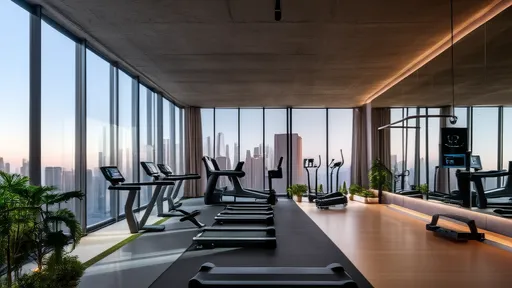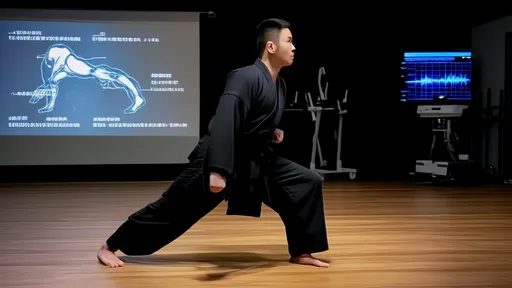Stepping into a European gym for the first time can feel like entering a cultural microcosm. Unlike the standardized, high-energy gyms prevalent in North America or Asia, Europe’s fitness spaces are as diverse as the continent itself. From the sauna-loving Scandinavians to the fashion-conscious Italians, each country has carved out its own unique approach to health and wellness. These differences aren’t just about equipment or layout—they reveal deeper attitudes toward community, privacy, and even national identity.
In Germany, for instance, efficiency reigns supreme. Gyms are meticulously organized, with clear signage and an unspoken rule against lingering too long on machines during peak hours. The atmosphere is disciplined, almost clinical, mirroring the German love for order. It’s not uncommon to see members wiping down equipment with the precision of a lab technician. What might surprise outsiders, though, is the acceptance of nudity in certain areas—a holdover from the country’s Freikörperkultur (free body culture) movement. Changing rooms often lack private stalls, a stark contrast to the modesty expected in British or Spanish gyms.
Cross the Alps into Italy, and the vibe shifts dramatically. Here, gyms double as social hubs where looking good is as important as the workout itself. You’ll find more designer activewear per square meter than at a Milan fashion week pop-up. Italians treat their gym time as a performance, from artfully arranged gym selfies to animated conversations between sets. The focus on aesthetics extends to the facilities, which often prioritize sleek design over brute functionality. Unlike in Germany, where silence is golden, an Italian gym thrives on noise—laughter, gossip, and the occasional dramatic outburst over a dropped weight.
Head north to Sweden, and you’ll encounter an entirely different philosophy. The Swedish approach to fitness emphasizes lagom—the concept of "just the right amount." Gyms here are minimalist spaces with an almost reverential hush. What they lack in flashy equipment, they make up for in thoughtful design: large windows framing nature, ergonomic wooden flooring, and an abundance of recovery tools like foam rollers. The sauna is the heart of these facilities, used for post-workout relaxation rather than preening. Notably absent are the protein shake bars and supplement hawks common elsewhere; Swedes tend to view fitness holistically, inseparable from overall well-being.
France presents yet another contrast. Parisian gyms, in particular, have perfected the art of making exercise seem effortless. You won’t find many bodybuilders grunting through deadlifts; instead, there’s a prevalence of ballet-inspired barre workouts and resistance training that prioritizes elongation over bulk. The French have a knack for turning sweat into sophistication—even their gym towels look chic. Interestingly, many smaller gyms close for two hours at lunch, respecting the sacred pause in the workday. This reflects a broader cultural resistance to the 24/7 fitness mentality seen in other global cities.
Perhaps the most striking divide lies between northern and southern Europe when it comes to schedules. In Spain, don’t expect to find crowded gyms at 7 AM. The prime workout hours begin around 8 or 9 PM, aligning with the country’s late-night rhythm. It’s not unusual to finish a spin class at midnight and head straight to a tapas bar. Meanwhile, in Denmark, most facilities empty out by 8 PM, as Danes prioritize early mornings and work-life balance. These scheduling differences aren’t merely preferences—they’re windows into how cultures value time itself.
Eastern Europe adds another layer to this tapestry. In countries like Poland and Hungary, gyms often function as bastions of old-school strength training. You’ll find fewer cardio machines but ample squat racks and Olympic lifting platforms. The vibe is utilitarian, with less emphasis on luxury amenities and more on raw functionality. Interestingly, many Eastern European gyms maintain strong connections to competitive sports, reflecting the region’s historic emphasis on athletic excellence during the Soviet era. The clientele tends to be serious—this isn’t where you go for casual treadmill jogging while watching Netflix.
Britain occupies a middle ground in many respects. London gyms blend American-style corporate fitness chains with European sensibilities. There’s a particular British quirk: the unspoken class coding of certain workouts. Rowing machines, for instance, carry subtle public school connotations, while boxing gyms skew working-class. Unlike in Mediterranean countries where gym wear is flaunted, Brits often favor understated, slightly worn workout gear—as if trying too hard would be impolite. The pub-like banter in changing rooms also stands out, with self-deprecating humor masking genuine fitness dedication.
These cultural nuances extend beyond mere observation. They influence everything from business models (German gyms often require year-long contracts, while French ones offer more flexibility) to social dynamics (Italian trainers might hug clients, while Swedish ones maintain professional distance). Even the music playlists tell a story—techno dominates Berlin gyms, while Lisbon’s favor upbeat Latin rhythms. For travelers, navigating these unwritten codes can be as challenging as mastering proper squat form.
What unites European gyms, despite their differences, is a shared resistance to the one-size-fits-all approach. Whether it’s the Finnish love for outdoor winter workouts or the Spanish siesta-adjusted schedules, these variations remind us that fitness isn’t just about physical transformation—it’s a cultural practice shaped by history, climate, and social values. The next time you drop into a foreign gym, pay attention not just to the equipment, but to how people move through the space. You might learn more about the country than any guidebook could teach you.

By /Jul 10, 2025

By /Jul 10, 2025

By /Jul 10, 2025

By /Jul 10, 2025

By /Jul 10, 2025

By /Jul 10, 2025

By /Jul 10, 2025

By /Jul 10, 2025

By /Jul 10, 2025

By /Jul 10, 2025

By /Jul 10, 2025

By /Jul 10, 2025

By /Jul 10, 2025

By /Jul 10, 2025

By /Jul 10, 2025

By /Jul 10, 2025

By /Jul 10, 2025

By /Jul 10, 2025